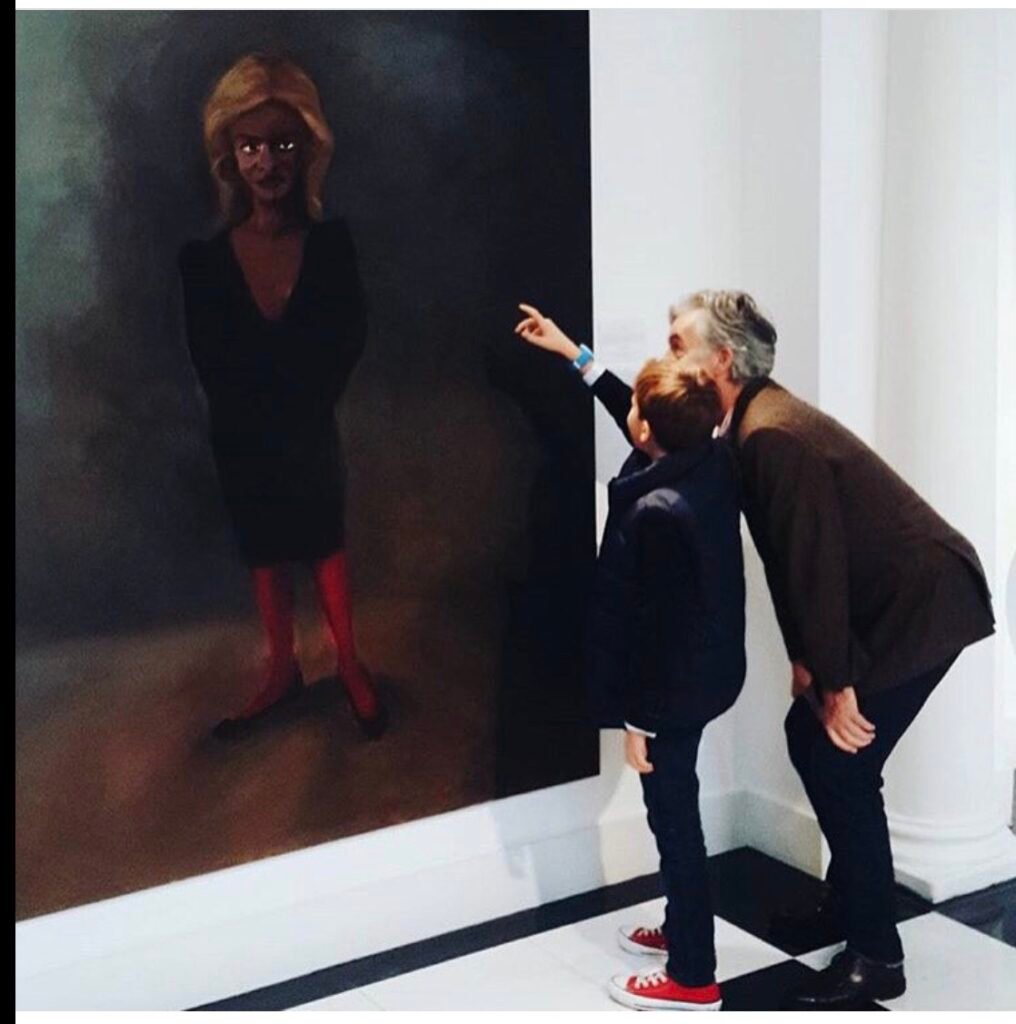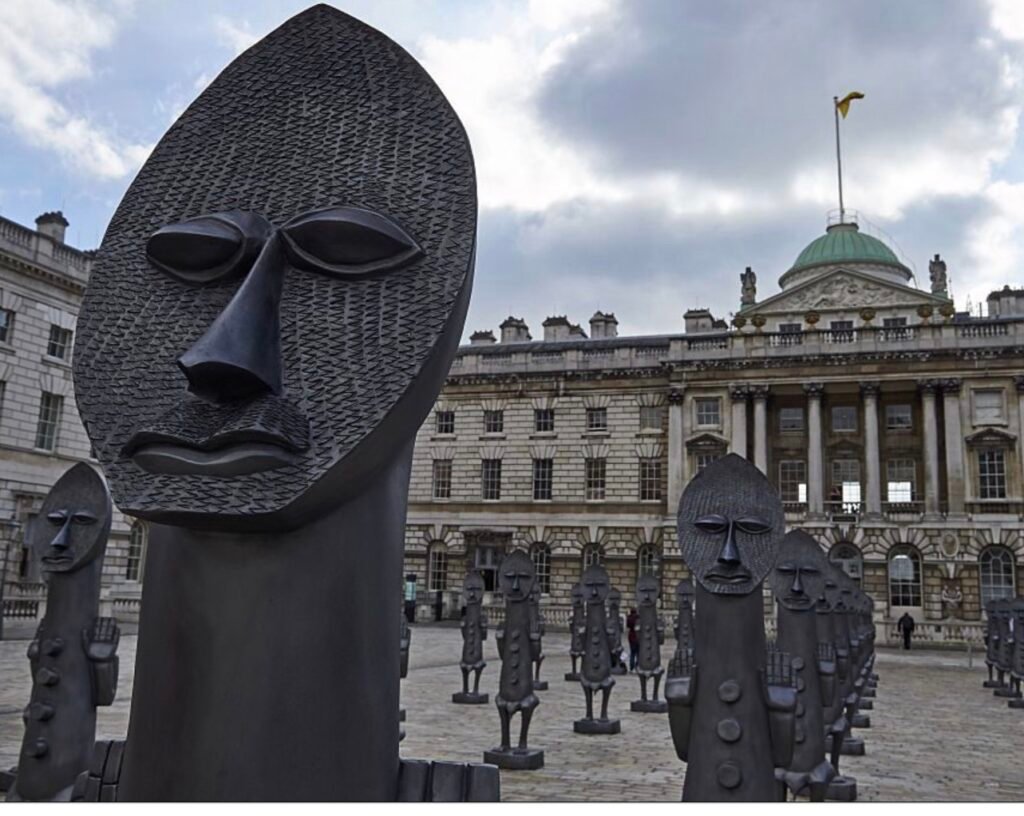THE RISE AND RISE OF AFRICAN CONTEMPORARY ART
The art market moves at a tremendous pace and over the last ten to fifteen years nowhere has this been more apparent than in the African market and its diaspora.
At the beginning of the twenty first century the art market, often driven by the large international auction houses, who saw a client development opportunity, began to focus on new and emerging geographical regions. This was influenced by the growing number of high-net-worth individuals, (eg oligarchs in Russia and CIS, Gulf ruling families) who began to buy at the top end of the international art market. At the same time local art communities began to develop in some of these regions and countries, fuelled by cultural tourism, local competition and collaborations with international museums (eg the Louvre and Guggenheim in Abu Dhabi), galleries, auction houses and the establishment of local art fairs.
Whilst at Sotheby’s in 2010, I had discussions with senior executives about the growing expansion and interest in the African market. At that time Bonhams was the only major auction house to hold dedicated sales of modern and contemporary African art and African artists from North Africa were already being included in Middle East sales and Contemporary Art sales in London.
The first time I saw this piece, below, by Al Anatsui, the renowned Ghanaian sculptor, at a Sotheby’s sale in 2008 , it took my breath away. But Sotheby’s had other corporate priorities and it was not until 2017, four years after I left the Company, that they held their first sale in London dedicated to African Art.

In 2013 I took a trip to Lagos, Nigeria, to check out the art scene there. Lagos is arguably the largest and most vibrant centre in Africa for African modern and contemporary art, with a thriving community of artists, galleries, events and the most well-respected auction house in the region, Art House. Everywhere I looked there was art: in galleries, in the street, in the clothes that people were wearing, it was an unforgettable trip.

Back in the UK more was happening. The Pangea exhibition at the Saatchi Gallery, in London, 2014, introduced many African artists to the mainstream market, including Mario Macilau, Ibrahim Mahama and Aboudia. It was also at this time that I met Ed Cross, a gallerist and expert in Modern and Contemporary African art who, like myself, was consulting at The Auction Room, an online auction business in Central London. Ed represented Mario Macilau, the renowned photographer from Maputo, Mozambique; I helped set up a fascinating selling exhibition of his photographs, attended by Macilau himself, and I bought a photograph from his ‘Faith’ Series, illustrated below.

At that time one of our auctions contained a beautiful painting by Lynette Yiadom-Boakye, illustrated below, another artist who was new to me. With a low estimate of £30,000 and a huge amount of interest before the sale, we were all very excited. Unfortunately for us another work by the artist sold for £105,000 in a sale at Christie’s, just twelve hours before our auction, and our work was subsequently withdrawn by the vendor. Since then her prices have escalated, she had a very well received retrospective exhibition at the Tate Britain in London in 2021 and one of her paintings sold at Christie’s New York earlier this year for $1,950,000.

World events both inside the art market and geopolitically have catapulted African art into the mainstream, it has become a highly sought-after sector of the market. Artists of African origin and those from its diaspora are being re-evaluated, with their works increasingly featuring in exhibitions, both in the museum as well as in the commercial sector. A huge catalyst has been the 1:54 Art Fair, founded by Touria El Glaoui and launched in London in 2013 at Somerset House. Taking place in October during Frieze week it captured the imagination of artists, galleries, and collectors: it was accessible, thought-provoking, great fun and it did and still does not suffer from the elitism and exclusivity that in my opinion blights many other art fairs.

At the Venice Biennale in 2015 the increased presence of African artists was immediately noticeable. Standouts for me were the huge installation by Ibrahim Mahama, ‘Out of Bounds’, (illustrated below) using jute sacks, bags once used to carry cocoa and now used for transporting coal. The sacks are inscribed with names and embellished with regional patterned fabrics, drawing attention to the global transportation of goods across borders. Another standout was the exhibition of photographs by Mario Macilau in the Pavilion of the Holy See, showing his photographs of street children in Maputo, Mozambique, where he grew up.

Recently the world’s largest and most wealthy commercial galleries and art dealers have jumped on the ‘African Art’ bandwagon. For example, Hauser and Wirth have signed up the Estate of Ed Clarke, an Afro-American contemporary of Jasper Johns, Jackson Pollock and the abstract expressionist movement, who was overlooked in the 1950’s and 1960’s. Also Frank Bowling, a Guyana born artist of Afro-Caribbean origin who won a scholarship to the Royal College of Art in London, and who was a contemporary of David Hockney. It is important to point out that both of these artists have objected to being pigeon-holed because of their roots, but don’t let that stand in the way of the market using this as a public relations tool. For me they are both fantastic artists in their own right and fully deserve the acclaim that has come their way: in the case of Ed Clarke, sadly too late because he passed away in 2019.


It is still possible to buy affordable African Modern and Contemporary Art. The 1:54 Art Fair, which now has shows in London, New York and Marrakesh, is an excellent place to start and to see a wide range of artists. A particular favourite artist of mine, represented by Amanda Beardsmore and who I discovered at 1:54, is Atta Kwami, a Ghanaian painter, printmaker, art historian and curator, who divided his time between the UK and Ghana, and who was recently awarded the prestigious Maria Lassnig Foundation Public Art Commission, in conjunction with the Serpentine Gallery in London. Her passed away earlier this year but his posthumous mural has just been unveiled and will be on view at the Serpentine North Gallery in London for the next few months.

In London there are now several galleries and advisors who represent African artists and Bonham’s and Sotheby’s hold regular auctions for this genre. Ed Cross Fine Art Gallery, which opened in the City of London earlier this year, is a particular favourite of mine: Ed has many year’s experience of the market, having lived both in Africa and the UK. He has a very good eye and a knack of representing artists who create beautiful work and have something interesting to say. Current artists that he is currently representing are Abe Odedina, Shiraz Bayoo, Tiffanie Delune and Anya Paintsil. Christian Sulger-Buel’s gallery in South East London, close to the Tate Modern, is another interesting space.
I hope that you have enjoyed reading this very brief personal introduction to the African Art Market. It is a challenge to attempt to cover the whole of this market in a short journal piece. Please feel free to contact me for further information, to arrange art fair tours, gallery introductions or general advice about the market.
Jonathan Massey
September 2022
masseyjcm@gmail.com
(0044) 777 5914488




